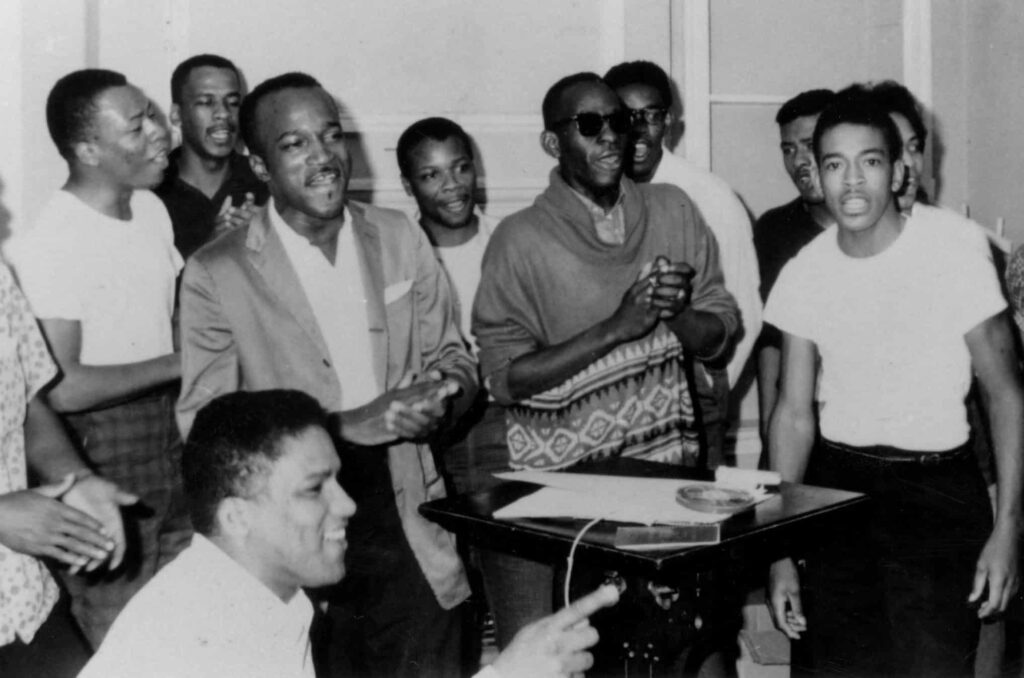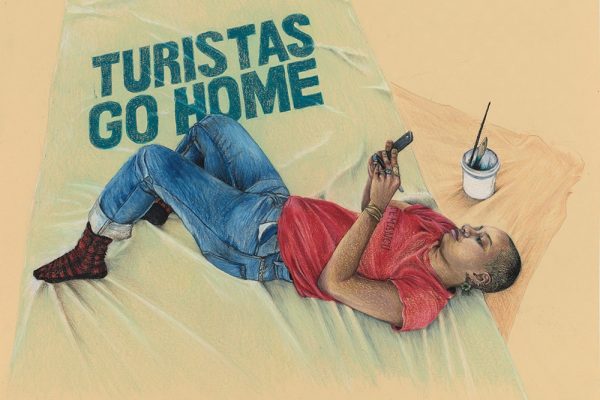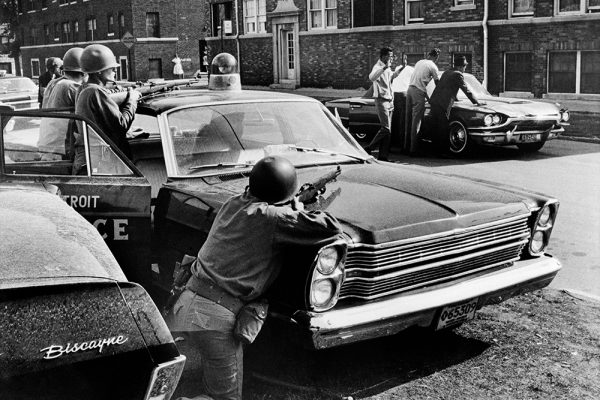Movements are made when people in motion outpace existing organizations and tactical urgency remakes the existing landscape.
That’s what happened on February 1, 1960, when four college students staging a sit-in at a segregated lunch counter in Greensboro, North Carolina spurred dozens of sit-ins throughout the South by the end of the month. By the middle of April that year, leading agitators of these sit-ins gathered at Shaw University to formalize a new vehicle to sync their efforts: the Student Nonviolent Coordinating Committee (SNCC). Pronounced “snick,” the organization’s members became known as the shock troops of the civil rights movement—people of unparalleled courage and creativity in the fight against white supremacy.
Though some SNCC veterans made their way to political office—most famously John Lewis, James Clyburn, Eleanor Holmes Norton, and Marion Barry—SNCC’s greatest triumph was the emphasis it placed on grassroots organizing. It empowered a generation of largely unheralded organizers. Its members braved racist terror to challenge segregation, demonstrate multiracial democracy, and forge transnational coalitions. Since its collapse, SNCC veterans have been the most conscientious of the ’60s-era activists to ground their individual and collective legacies in the world-making pursuit of justice.
Today, even in commemoration, SNCC exemplifies the organized chaos of social change. Due to the COVID-19 pandemic, its sixtieth anniversary conference was postponed from an in-person gathering in April 2020 to a virtual gathering in October 2021, over sixty-one years after its initial founding. With an eye on history, the conference foregrounded the pervasive threats facing the prospect of multiracial democracy today. In 1964 Mississippi was widely seen as the most virulently racist state in the country when SNCC expanded an ambitious plan to organize voter registration efforts there. Now, as several conference participants noted with restrained optimism, Mississippi has the largest number of Black elected officials in the country—a sure sign of SNCC’s legacy. Yet it also has rampant voter suppression and remains one of the poorest states in the country in terms of education, health care, and infrastructure—signs of institutional problems SNCC could not overcome.
More than 1,000 people registered to attend the conference, where SNCC veterans chopped it up with a multigenerational group of organizers. With sessions on voting rights, police reform, Black elected officials, public education, affordable housing, economic justice, and the role of artists in activism, the gathering mapped an impressive terrain. Less frequently discussed—but no less central to its impact—was SNCC’s internationalism. The organization’s sense of urgency was always enmeshed in a global understanding of racism and liberation. Theirs was an unruly internationalism, however, one that ultimately cost the organization external support and exacerbated internal tensions. Though the difficulties of its global outlook may have diminished the memory of SNCC’s internationalism, a review of that history highlights the significance of the organization’s legacy for all who desire a world without the color line.
SNCC always stayed one step ahead of what was popularly palatable, both attracting and molding great organizers. Members took organizing lessons from the Black church and the social knowledge of migration from South to North and Caribbean to United States. It was this sense of internationalism, born of experience and awareness, that defined SNCC. Indeed, as its founding statement proclaimed: “[W]e identify ourselves with the African struggle as a concern of all mankind.”
The young militants were inspired by the move to decolonize Africa. As Julian Bond observed in a reflection on SNCC’s legacy, the group was addressed early on by the brother of the Kenyan labor leader Tom Mboya, Alphonse Okuku, and Kenyan leader Oginga Odinga. Speaking for SNCC at the 1963 March on Washington, John Lewis proclaimed “‘One man, one vote’ is the African cry. It is ours too. It must be ours!” When the dramatic showdown at the 1964 Democratic National Convention ended with the Democratic Party refusing to seat the Mississippi Freedom Democrats, Harry Belafonte paid for eleven SNCC organizers to recuperate in newly independent Guinea. Fannie Lou Hamer, the Mississippi sharecropper whose dynamic presence in Atlantic City exemplified SNCC’s moral force, was among the group. As Keisha Blain quotes Hamer saying of the trip in a new intellectual biography, “I felt a closeness in Africa.” That closeness was embodied in subsequent actions, including SNCC’s March 1966 anti-apartheid protest outside the South African consulate.
SNCC confronted the limits of establishment commitments to civil rights, leading many in the organization to forgo a seat at the table while aiming to sweep out its legs. In Atlantic City, Hamer said “we didn’t come all this way for no two seats at the table when all of us is tired. SNCC’s legendary executive secretary James Forman, an Air Force veteran who served in Okinawa, best expressed this sentiment in a 1965 speech (an excerpt of which was aired at the conference). Broad shouldered and wearing SNCC’s uniform of overalls (that of the Southern Black farmer), Forman stood at a lectern crowded with microphones and declared: “If we can’t sit at the table, let’s knock the fucking legs off.” The point was not to be destructive, but to build alliances with liberation movements the world over. The invitation behind an early SNCC poster—“come let us build a new world together”—was primarily understood as interracial, but the “us” became increasingly global and anti-imperialist.
Indeed, the Thanksgiving 1965 SNCC staff meeting ended with a heated debate about whether the organization should publicly oppose the U.S. war in Vietnam. No one supported the war, but decades of Cold War orthodoxy had chastened civil rights organizations from speaking about U.S. foreign policy. Yet as the war accelerated, alongside U.S. anticommunist activity in Latin America and U.S. apartheid support in southern Africa, many argued that SNCC could not stay silent. Partisans of the emerging push for Black Power and veterans of the Mississippi movement and Lowndes County Freedom Organization led the discussion and prevailed. Gloria House—who, before her time in Lowndes County, met Algerians and other Africans while studying in Paris—authored the statement drawn from the collective conversation.
The statement lingered in SNCC’s office for a month until Sammy Younge, a Navy veteran turned SNCC organizer, was shot in the back trying to use a bathroom in Tuskegee, Alabama on January 3, 1966. Three days after Younge’s murder, SNCC released its statement against not just the war in Vietnam, but U.S. empire everywhere: “We believe the United States government has been deceptive in its claims of concern for the freedom of the Vietnamese people, just as the government has been deceptive in claiming concern for the freedom of colored people in such other countries as the Dominican Republic, the Congo, South Africa, Rhodesia, and in the United States itself.” The organization saw internationalism as both immediate and intimate. How could the United States claim to want free elections abroad when “for the most part, elections in this country, in the North as well as the South, are not free” the statement asked. “We maintain that our country’s cry of ‘preserve freedom in the world’ is a hypocritical mask behind which it squashes liberation movements which are not bound, and refuse to be bound, by the expediencies of United States cold war policies.” Turning attention to the coercive enlistment practices feeding the U.S. war effort, the statement juxtaposed the civil rights movement as the antidote to empire: “We ask, where is the draft for the freedom fight in the United States?”
SNCC was the first civil rights organization to come out against the Vietnam War, and its anti-imperialism was thus inseperable from its growing embrace of Black Power. After SNCC Communications Secretary and Georgia state representative-elect Julian Bond refused to disavow the statement, his segregationist colleagues in the legislature refused to seat him. Their obstinance triggered a special election in which Bond ran again, with SNCC forming a project in Atlanta to coordinate his reelection. Based in the Vine City neighborhood, the Atlanta Project of SNCC joined its campaign for Bond’s reelection with a nimble program targeting slumlords and protesting the war in Vietnam.
The organization also produced the first attempt to think through what would become Black Power. Based on wide-ranging conversations among project staff, they drafted a “Black Consciousness” proposal in the spring of 1966, three months before Stokely Carmichael made his legendary call for “Black Power” during a march through Mississippi. SNCC rejected the “Black Consciousness” proposal and dismissed the Atlanta Project, a trend that many historians have continued to adopt. Despite being directed by longtime SNCC organizers from the South, the Atlanta Project has been dismissed as a group of Northern separatists with little history in the organization. Yet the Atlanta Project, written off as pushing a divisive agenda, vocalized what many in SNCC were thinking. Indeed, SNCC itself took up the Atlanta Project’s emphasis when Stokely Carmichael led a crowd in Mississippi in calling for Black Power. Following this public demand for Black Power, SNCC would adopt the signature dimensions of the Atlanta Project position paper: an emphasis on self-determination, cultural pride, and a call for white people to organize against racism in white communities. The name Black Consciousness would soon augur a potent challenge to white supremacy when South African students, led by Steve Biko, took it as their mantle.
As it vocalized Black Power, and alongside new organizations such as the Black Panther Party, SNCC continued to flout Cold War liberalism. In May 1967, it proclaimed itself a human rights organization that “encourages and supports the liberation struggles against colonialism, racism and economic exploitation wherever these conditions exist.” The next month, Jim Forman launched SNCC’s International Affairs Commission to combat the “triple-threat hyenas of Racism, Capitalism, and Imperialism across the globe.” (Forman’s language echoed Martin Luther King’s April 1967 speech against the Vietnam War, which proclaimed the existential threat posed by “the giant triplets of racism, materialism, and militarism.”)
During that same month, June 1967, Israel gained control of the Golan Heights, the Gaza Strip, the West Bank, and East Jerusalem after the six-day war. The move prompted SNCC to release a statement opposing Zionism. “During World War II, six million Jews were murdered by the Nazi war criminals in German concentration camps,” the statement opened. “SNCC understands this tragedy of what happened to the Jews and sympathizes with them since we black people possibly face the same fate here in the United States.” The statement then offered a condensed history of Zionism as a form of racist colonialism against Palestinians, albeit undermined by antisemitic canards about “the famous Rothschilds” controlling the wealth of Europe and Africa and involved in the “original conspiracy to create the State of Israel.”
SNCC paid a heavy price for its internationalism. While the trope of “Black-Jewish conflict” has been overdetermined in explaining fractures of the civil rights movement, it was SNCC’s opposition to the war in Vietnam that first cost the organization funding and support. As Clayborne Carson recounts in his history of SNCC, Lyndon Johnson pressured other civil rights leaders to denounce it for its antiwar statement. They did not need much encouragement. NAACP leader Roy Wilkins opposed SNCC in his national newspaper column. Whitney Young of the Urban League complained, as Vice President Hubert Humphrey put it, that the Johnson administration treats “leaders of civil rights groups with a sort of benevolent equality” that should not be extended to those engaged in “the most outrageous attacks on the President and the Administration.” Lillian Smith, the white southern liberal writer, implied that “SNCC was now dominated by Communists.” The loss of donors and goodwill only increased as Black Power emphasized self-determination and global solidarity.
Though the organization suffered, many of the individuals involved leaned further into internationalism. Ella Baker, whom SNCC veterans still reverentially call Ms. Baker, is widely credited for encouraging SNCC’s participatory democracy and grassroots leadership. She also nurtured its spirit of global solidarity. Baker became the chair of the Puerto Rico Solidarity Committee and, in a 1974 address at Madison Square Garden, voiced how grassroots leadership harmonized with the global freedom fight. Baker implored attendees to reach out to friends and neighbors outside of the Left, “and get them to understand that they, as well as you and I, cannot be free in America, or anywhere else where there is capitalism and imperialism, until we can get people to recognize that they themselves have to make the struggle and have to make the fight for freedom every day in the year, every year, until they win it.” That same year SNCC veterans helped organize the Sixth Pan-African Congress, held in Tanzania, which was the first on the African continent. Former SNCC members were the shock troops of the anti-apartheid and anti-U.S. intervention movements of the ’70s and ’80s, much as they had been on the frontlines against segregation and colonialism during the ’60s.
An additional cost of SNCC’s internationalism may be the domesticating of its memory. Despite internationalism’s centrality to SNCC’s life and afterlife, it has been largely forgotten as a core tenet of the organization. It is not for lack of material. The SNCC Digital Gateway, a phenomenal multimedia archive of SNCC’s history that includes archival sources as well as more recent oral histories, features several items on the organization’s internationalist politics and activism. And yet, the story of SNCC—even its commemoration—has been domesticated to its work in and understanding of the United States as separate from the rest of the world.
Without question, SNCC’s unparalleled bravery in Mississippi, Alabama, Arkansas, and Georgia is a heroism of epic proportions. Its legacy exemplifies the kind of tenacity necessary to secure and maintain multiracial democracy. Yet SNCC’s democratic pursuits clearly were not limited to the United States.
Even partial victories can dull the edges of unruly movements. Because the civil rights movement rendered formal segregation not only illegal but also unpopular for many, SNCC’s organizing in the clutches of Jim Crow has been easier to reconcile than its emancipatory internationalism. But for many in the organization, the two were inseparable. As SNCC workers dug in for long-haul fights in rural towns and big cities, they did so with a recognition that the “local people” they organized with were a subset of the “local people” that were everywhere capable of and engaged in fighting oppression. The hyper-localism of being grounded in particular communities was in service of a supra-universalism: the global fight for freedom.
Black Power heightened SNCC’s already present internationalism, but it also proved controversial—during SNCC’s day and, until recently, within scholarly and popular accounts of the period. Blamed for destroying the “beloved community” and endorsing identity-based marketing campaigns, Black Power’s radical insistence on global belonging has too often been discarded in official retrospectives of the ’60s.
As always, the grassroots tell a different story. Originating out of protests against police violence, the Movement for Black Lives has exceeded as well as interrogated U.S. borders. As Adom Getachew recently argued, the Vision for Black Lives statement uplifts a Black internationalist thought that stretches at least back to W. E. B. Du Bois. And though it is not acknowledged nearly as much as it should be, even by some SNCC veterans, SNCC’s example reminds us that such ideas are enlivened by the interconnected struggles of “local people” everywhere.
We should remember SNCC’s action in Mississippi six decades ago as a beacon of what must happen in Mississippi today. But what occurred in Mississippi was also a reflection on Ghana and Tanzania, the Dominican Republic and Vietnam. Mississippi today is a prism through which we might link Hungary and Haiti, Puerto Rico and Palestine. As we once again battle against neo-confederates clinging to a declining empire with violent fury, SNCC’s legacy beckons to us still: come, let us build a new world together.







